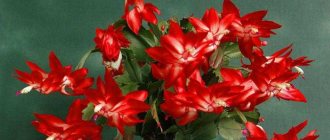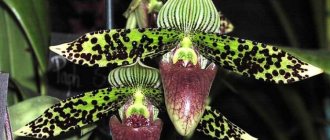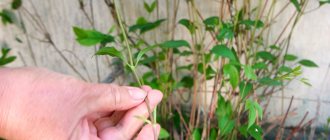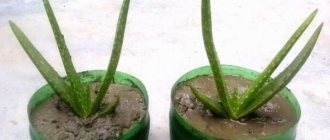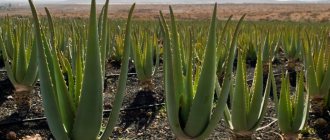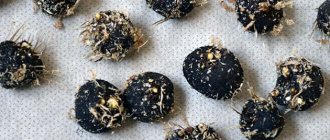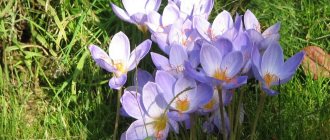Japanese anemone (autumn anemone, sleep grass, lumbago, anemone) is a spectacular perennial shrub of the Ranunculaceae family, native to Japan, China and the USA, numbering about 150 species. Large leaves in the form of dissected feathers, rich color and bud petals, fluttering even with a slight blow of wind, add a special charm to anemony. The height of the plant, depending on the variety, varies from 70 to 140 cm, and the flowering period lasts from mid-summer to mid-October, pleasing the eye of the gardener and allowing the anemone to be used in picturesque mixborders and flower beds with roses, gladioli, geraniums, hosta and hydrangea.
Recommended varieties
- "Prinz Heinrich" is a tall shrub with large, beautiful basal leaves. One inflorescence contains 15 bright red flowers. Flowering of this variety begins in late summer or early autumn.
- "September Charm" is a plant up to 130 cm high with large trifoliate serrated leaves. Graceful pink flowers with a diameter of 8 cm bloom and delight with their beauty from August to September.
- “Whirl Wind” is an unpretentious variety with decorative, serrated basal leaves. Plant height is from 80 to 100 cm, the flowers are white with light yellow stamens, collected in inflorescences of 15 pieces. Flowering lasts from August to September.
- "Konigin Charlotte" is a 1 m high perennial with three-lobed leaves. The flowers are double, 8 cm in diameter, light pink.
- “Pamina” is an early-blooming variety (July-August) with large double cup-shaped flowers of dark pink, almost burgundy color. The plants are quite compact (up to 90 cm) and are great for small gardens.
- “Profusion” is a plant with semi-double flowers of a dark purple-red color, rare for autumn anemones. Reaches a height of 90-120 cm, blooms from August to October.
- "Honorine Jobert" is a shrub with white flowers that are pinkish on the underside. The flowers consist of 6-9 sepals, the plant reaches a height of 90-120 cm. It blooms from August to October.
Varieties of Anemonia
Anemone is a very delicate and unique flower. Different types of this plant can have significant differences.
The most common representatives of this species:
- Japanese anemony - grows up to 1.5 m in height, blooms with white or pale pink flowers;
- Khubeiskaya - pink flowers, height up to 1.5 m;
- Hybrid - grows 90 - 1.20 cm. The flowers are white, each petal is framed with a pink edge, semi-double;
- Tender is a very cute plant. It grows only 5−10 cm in height. It blooms with sky-blue flowers.
All types of autumn anemone grow beautifully alongside other flowers. They are often used for decoration in landscape design. In autumn, during flowering, it has no equal. It can only be compared to a rose. The plant lives well next to flowers such as delphinium, verbena, chrysanthemum, asters. Looks good with gladioli.
If planted next to trees or shrubs that change leaf color in the fall, the effect can be stunning. Delicate flowers will look great against a contrasting background.
Anemonia is beautiful not only during flowering. She decorates flower beds throughout the garden season. It creates an unusual dark green background for other flowering plants. It is especially beautiful in the far corners of the flower garden, when it blooms, the whole garden seems to come to life again on a sunny autumn day.
You should definitely grow autumn anemonia in your garden. She gives him tenderness and well-being.
Landing
Spill the anemone seedling with settled water at room temperature so that after 20-30 minutes you can easily remove it from the pot. Choose a suitable location for the anemone, keeping in mind that:
- Forest varieties prefer shade, and a place in the northern side of the garden or under the crowns of trees is suitable for them, so that the flower does not suffer from excess sunlight.
- Anemone varieties that are accustomed to a temperate climate are planted on the eastern side of the garden.
- In the southern part of the garden it is better to plant heat-loving varieties of flowers.
Not everything is simple with the soil mixture either, because... some anemones prefer alkaline soil - those with plots with clay soil will have to deoxidize it. To do this, use ash or dolomite flour at the rate of 450-550 g/sq.m. “Construct” the soil mixture yourself by taking humus, turf soil, coarse sand and expanded clay in a ratio of 2:2:1:0.5 or use ready-to-use PETER PEAT “Garden Soil” soil from the HOBBY line. But there are anemone varieties that grow well only in neutral or slightly acidic soil - PETER PEAT soil “For conifers” from the HOBBY line, mixed with expanded clay PETER PEAT from the VITA line and coarse sand (4:1:1), is well suited for them. If you choose a homemade version of the soil mixture, add ash (300 g/sq.m), neutralized peat PETER PEAT line AGRO (300 g/sq.m) and complex mineral fertilizer PETER PEAT “NPK 15-15-15” line MINERAL.
At the end of April - beginning of May, dig a hole 45 cm deep and Ø40 cm in the area, put a drainage layer of fine crushed stone or gravel 15 cm thick on the bottom. Remove the seedling from the pot, lower it into the hole so that the top layer of the root ball coincides with the ground level (the root collar should be above the ground) and cover with soil without compacting it. Sprinkle with water, wait until the soil settles and add again on the sides, trying not to disturb the root ball. Anemone grows quite quickly, so the distance between neighboring plants should not be less than 20-25 cm. Try to avoid planting under mature trees - the anemone will receive an excess of moisture, a lack of light and will not bloom. Mulch your plantings with dry sawdust or peat neutralized by PETER PEAT from the AGRO line to a radius of 0.4 m and a thickness of 3-4 cm.
Top dressing
Top dressing 1 (before planting in the ground), options:
- aqueous solution of mullein (1:10);
- 2-year compost (4 kg/sq.m);
Feeding 2 (during flowering and every 2 weeks), options:
- liquid humic fertilizer PETER PEAT “Living force: for flower crops” (see dosage on the package);
- an aqueous solution of bird droppings.
Feeding 3 (autumn, before winter), options:
- 8-10 g nitrogen + 15-20 g phosphorus + 10-15 g potassium fertilizer;
- complex mineral fertilizer PETER PEAT “NPK 15-15-15” of the MINERAL line.
Features of cultivation
Among the variety of species and varieties of anemones, there are some that are completely unpretentious, and there are those that require special care, and this difference is explained by the fact that some anemones have rhizomes, while others have tubers. Species with rhizomes are easy to grow, but mistakes in caring for tuberous anemones lead to serious consequences.
- How homemade amaryllis blooms
There are a few things to consider if you are interested in growing anemones.
- Firstly, these flowers require mandatory watering in dry, hot weather.
- Secondly, autumn fertilizing should be carried out with complex mineral fertilizers, and the soil should be fertilized before planting or during growth and flowering - with organic fertilizers.
- Thirdly, in winter, protect the anemones from frost by covering them with dry leaves.
- And lastly: it is best to propagate anemones in the spring by root suckers or seeds sown closer to winter. We will dwell on all these features in more detail below.
Propagation by seeds
The germination rate of anemone seed material is low, only 5-20%, because the embryo in its seeds is small and poorly developed. As a result, the plant develops slowly, and only after 2-3 years you will be able to admire its flowering. The technique of growing anemones from seeds is a little complicated, and the main thing is to sow only fresh seeds collected immediately after flowering:
- into a planting container with PETER PEAT soil “For seedlings” from the HOBBY line and adding a quarter of the volume of sand, bury the seeds 0.3-0.5 cm, sprinkle the soil on top, spray with settled water at room temperature and cover with an opaque film.
- As soon as the seeds swell, place the container in the refrigerator at + 2-4°C for 3 months.
- Sprinkle a little more soil on top (2-3 cm) and send the container with the film outside: sprinkle it with sawdust or straw and, when snow falls, make a slide out of it over the container.
- In mid-April, hardened and sprouted sprouts can be planted in open ground, keeping covering material on hand in case of return frosts.
But to save yourself from all this hassle, it is better to plant the seeds in autumn in boxes with loose soil and immediately bury them in the yard, covering them with cut sawdust or branches. Over the winter they will undergo natural freezing, and in the spring you will dig them up and plant them.
Japanese anemone in landscape design
Autumn anemones can decorate any area of the garden. Decorative perennials can be planted in various variations:
- tapeworms;
- border plantings;
- group compositions;
- mixborders;
- for designing alleys, paths or gazebos.
Despite the narrow palette of colors, Japanese anemone goes well with almost all garden plants.
The use of anemone in landscape design
To emphasize the individuality of each culture, landscape designers recommend the following neighbors for anemones:
- junipers, thujas or cypresses;
- ferns;
- roses;
- ornamental shrubs.
Delicate, orientally graceful Japanese anemones appeared in Europe not so long ago, but have already managed to occupy their niche in local gardening. Despite their fragile appearance, perennials are quite stable and unpretentious, which makes them favorites of gardeners in the middle zone.
Reproduction by cuttings
In March, dig up a mature anemone bush, cut it off at the root collar and use water to free the roots from the ground. Cut the cuttings 5-6 cm long and immerse them for 6 hours in a root formation stimulator, for example, “Epin” or liquid humic fertilizer PETER PEAT “Living Force: for soaking seeds.” Then place the cuttings in 12x25 cm pots filled with a peat-soil mixture with the addition of loam and sand or simply PETER PEAT soil “For seedlings” from the HOBBY line (bury the cuttings to their full length so that their tops are on the soil surface). When planting cuttings, the soil should be slightly compacted and sprinkled with sand to a thickness of 0.5-0.8 cm on top. Place the pots in a greenhouse, cover with opaque glass/film and water rarely, preventing the roots from rotting. As soon as stems with leaves appear, remove the film and increase watering - just at this time adventitious roots are forming. Once a week, feed young plantings with liquid humic fertilizer PETER PEAT “Living Force: Healthy Seedlings” and once a quarter with complex mineral fertilizer PETER PEAT “NPK 15-15-15” from the MINERAL line. Next year, the anemone can be planted in open ground.
Preparing seeds before sowing
The seeds of this crop have poor germination (no more than a quarter of the material), so before planting anemones, germination with preliminary stratification is necessary. This concept means simulating wintering conditions without critical temperature drops.
The seeds are placed in a damp sand-peat mixture (1:3) and kept warm for several days until they swell. After this, the soil substrate is moistened again, its volume is slightly increased and the container is moved to a cooler place for a few more days. During this time, the seeds should hatch. And finally, the container with the seeds is sent “for wintering” to a cold place. It is best to bury the container in the ground and cover the top with insulating materials and then with snow.
In the spring, you need to dig up the container as soon as the ground thaws, and plant the anemone seeds for seedlings.
You should know! When propagated by self-collected seeds, the color of the resulting plants is paler than that of the mother plant.
Propagation by tubers
Some anemone varieties have a tuberous root system, and their propagation has a number of features:
- After flowering ends in the fall, cut off the leaves and stems of the plants “under the stump”, dig up the tubers and place them in pots. The pots should be stored until spring in a room with a temperature of + 2-4°C, and before planting in the spring, a month before, in a warmer room with a temperature of + 12°C.
- About 2 weeks before planting in open ground, place the anemone tubers in shallow plates filled with water and a root growth stimulator - liquid humic fertilizer PETER PEAT “Living Force: for soaking seeds”, and wrap them in gauze so that the entire volume of the tuber is saturated with this feeding for 6 hours.
- Next, you need to place the tubers in a planting container with a soil mixture consisting of soil, peat and sand (2:1:1), cover it with transparent glass and maintain moderate soil moisture. After 10-12 days, the tubers will produce new roots and small seedlings.
- Prepare the soil in open ground (see the “Planting” subsection) and plant the tubers in pre-dug holes. Water your plantings thoroughly.
- In the first week after planting, the anemone should be in partial shade, because the sun burns the young leaves.
Description of Japanese anemone
The herbaceous perennial belongs to the Buttercup family and is found throughout the temperate climate zone. Due to its late flowering, which lasts from July to October, Japanese anemone is also called autumn. Thanks to the creeping root system, the plant grows very quickly, forming a bright flowering cover.
Depending on the variety, the anemone grows up to one and a half meters, forming small bushes with erect, medium-leafy shoots. The leaf blades are oval, pinnate, dissected, emerald green in color. The inflorescences are umbrella-shaped, loose, up to 9 cm in diameter, and resemble chamomile in appearance. The structure of the baskets can be simple, semi-double or terry. The color is varied, but always with a golden or yellow-light green core.
Japanese anemone is a herbaceous perennial of the Ranunculaceae family.
Shelter for the winter
For the winter, in early November, mulch the anemone with a 10 cm thick layer of dry leaves or neutralized peat from the PETER PEAT line AGRO, and additionally cover the plant with spruce branches or branches of deciduous trees on top of it. Hybrid anemone varieties especially need this.
Some gardeners dig up anemones along with rhizomes and store them in a dark, cool, not damp room in a large container with appropriate soil, after cutting off the leaves and root stems. True, one must keep in mind that anemone does not tolerate replanting well, especially adult plants, and in this case it will most likely delay flowering.
Plant care
Bright anemone bloom
Growing and caring for hybrid anemone does not require any special effort or high costs. The main thing in care is to plant the plant, preferably in moist, fertile soil, carry out regular hand weeding to avoid damage to the upper part of the roots, loosen and, if necessary, water the soil.
A planted plant needs spring-summer mineral or complex fertilizer and autumn mulching with humus or peat, or even better with fallen leaves of trees such as apple, maple, linden or oak. This mulch is a true natural imitation of the forest floor inherent in this type of anemone.
A properly planted anemone practically does not need watering; the plant species needs to be moistened only in dry weather.
After flowering is completed, the stems are cut off. Already in late autumn, the bushes are covered with manure or vegetable compost and prepared for winter.
In central Russia, anemones tolerate winter normally, but if there is not enough snow, they can freeze.
To prevent this from happening, they are covered with spunbond or spruce branches or mulched with a large layer of fallen leaves. This especially applies to Japanese and hybrid species of anemone. The location of the powder should be indicated with a small peg so that the plant is not damaged during spring work.
Diseases and pests
- Anthracnose is brown spots that gradually grow on the leaves and stems of a plant. Over time, cracks form on the stems, the leaves turn brown and dry out, and eventually the entire above-ground part of the plant dies. Treatment: reduce the amount of watering, remove diseased parts of the plant and treat with fungicides - 2% Bordeaux mixture, oxychome or Trichodermin, Mikosan-B.
- Gray rot - in spring or autumn, brown spots form on the plant, covered with a gray fluff of a pathogenic fungus, the spores of which are very easily carried by the wind and affect nearby plants. The disease also occurs during periods of significant rainfall. Treatment: use fungicides - colloidal sulfur powder, the drug "Phyto-Doctor", reduce watering.
- Aphids are small insects 5 mm in size that feed on plant juices; during their life, they secrete a sweet substance - honeydew, which can attract other insects and thus increase the degree of damage. When there is a significant number of aphids, the surface of the affected areas becomes covered with a sticky liquid secreted by the aphids. Affected leaves curl down over time and then dry out. Treatment: use a soapy solution for spraying (2 teaspoons of liquid soap per 2 cups of water, add one cup of vegetable oil). Various insecticides can also be used.
- Leaf nematode is a small, up to 1 mm, colorless worm. Pale yellow spots begin to appear on the plant, subsequently turning brown, which then dry out: the affected fragment dies, and then the entire plant. Treatment: There are no ways to combat this pest. Destroy the affected plant, treat its growing area with insecticides - “Kinmiks”, “Fufanol”, “Bi-58”, “Lepidotsid”.
- South American leaf miner - lays eggs inside leaves. After a week, the larvae hatch and eat the insides of the leaf, causing it to wilt. Treatment: spray the plant with insecticides - organophosphorus compounds and pyrethroids.
- Slugs and snails - gnaw the leaves of garden plants, leave their sticky mucus on them and spoil the ripe crop. The object of their attention is leaves and flowers, while they do not touch large leaf veins and stems. Often, on damaged plants, in addition to mucus, piles of pest feces are visible. Treatment: first collect pests by hand. You need to remove all excess boards and stones, piles of weeded weeds from the site, mow the grass on paths and borders, as well as dry particularly wet areas and apply a solution of “Thunderstorm” and “Meta” metaldehyde. Scatter granular preparations on the ground in small piles. Do not allow animals into areas treated with metaldehyde under any circumstances! Spray the soil and plant with a 1% solution of copper or iron sulfate.
- The cutworm caterpillar - during the daytime, usually hides from sunlight under the leaves of plants or in the top layer of soil. At night, it cuts off young plants at soil level or simply gnaws leaf petioles. Treatment: manually collect caterpillars with tweezers, destroy all weeds, spray the plant with Zeta, Inta-vir, and Fas preparations.
Adding a small amount of sea salt or sea sand to the soil where anemones are grown helps in the fight against fungi..
Good luck!

